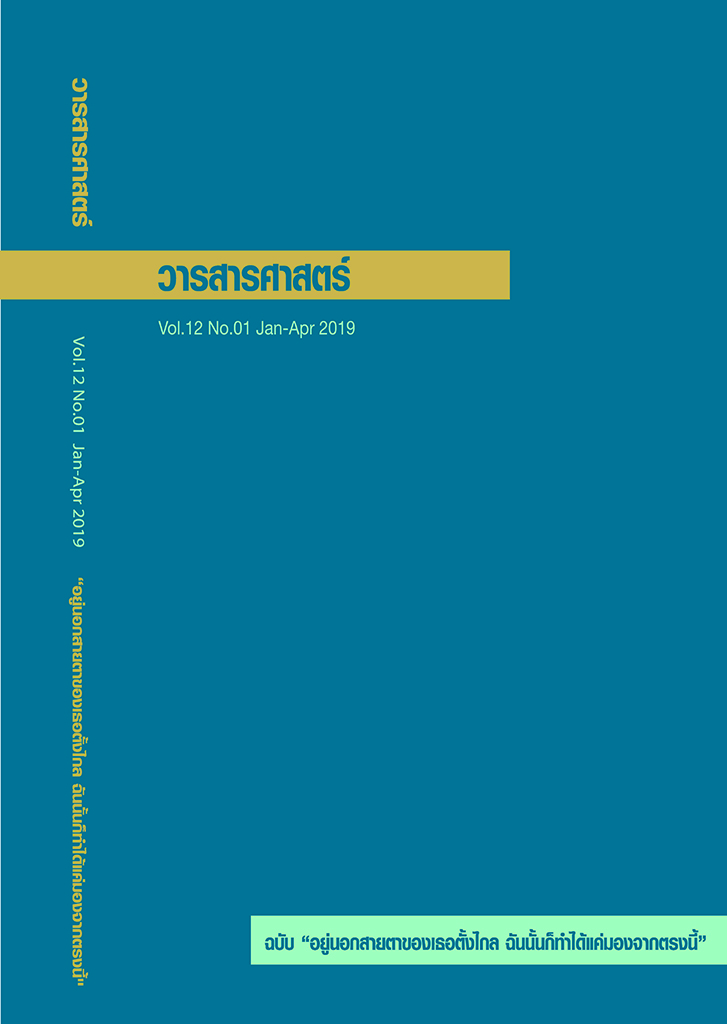The Search of Friendship and More: Camwomen Identity FormationOn the “Camfrog” Chatroom Programme
คำสำคัญ:
สาวเว็บแคม, มิตรภาพ, ทุน, ห้องแช็ทรูม, ชาติพันธุ์วรรณนา, อัตลักษณ์, เพศวิถีบทคัดย่อ
บทความนี้นำเสนอประเด็น “มิตรภาพ” ซึ่งเป็นหนึ่งประเด็นสำคัญ ในการกระตุ้นให้เกิดกระบวนการก่อร่างสร้างอัตลักษณ์ของสาวแคมฟร็อก ซึ่งในบทความนี้ใช้คำเรียกว่า สาวเว็บแคม (camwomen) ประเด็นดังกล่าวนี้เป็นส่วนหนึ่งจากการศึกษาเชิงชาติพันธุ์วรรณนากับกลุ่มสาวไทยที่นำเสนอตัวเองในลักษณะวาบหวามทางกล้องเว็บแคมผ่านโปรแกรมออนไลน์ชื่อ แคมฟร็อก (camfrog) บทความนำเสนอมิตรภาพสามรูปแบบและความสัมพันธ์อีกหนึ่ง รูปแบบที่มีส่วนสำคัญในกระบวนการสร้างอัตลักษณ์สาวเว็บแคม โดยประเด็นสำคัญที่มีการอภิปรายคือ โครงสร้างที่เป็นลำดับขั้นของแคมฟร็อกซึ่งแสดงโดยระบบสีผ่านทางชื่อ ไอดีของผู้ใช้ (user ID) ภายในโปรแกรมนั้น มีผลกระทบอย่างมากต่อการก่อร่างสร้างอัตลักษณ์สาวเว็บแคมและการรักษามิตรภาพระหว่างสาวเว็บแคมกับคนอื่น นอกจากนี้ แม้ว่าสาวเว็บแคมจะสะท้อนว่า การนำเสนอ ตัวตนในลักษณะวาบหวามบนห้องแช็ทรูมแคมฟร็อกถือเป็นทางเลือกที่พวกเธอได้กำหนดเอง (autonomous choice) ทว่าผลการศึกษายังสะท้อนอีกว่า “ความเกรงใจ” ค่านิยมหลักประการหนึ่งของสังคมไทยถือเป็นส่วนสำคัญในการตัดสินใจ ของพวกเธอ ดังนั้น บทความจึงอภิปรายประเด็นการใช้ประโยชน์จากความเกรงใจ โดยการวิเคราะห์ผ่านทางกรอบคิดของสองนักทฤษฎีคือ แมกซ์ เวเบอร์ (Max Weber) และปิแอร์ บูร์ดิเยอ (Pierre Bourdieu) พร้อมทั้งอภิปรายการแปรเปลี่ยนทุนโดยผ่านกรอบคิดของปิแอร์ บูร์ดิเยอ
เอกสารอ้างอิง
Todrahud Investigative Documentary Programme (รายการถอดรหัส), ITV channel, Thailand, broadcasted on 27 January and 10 February 10 2007.
Boellstorff, T. (2008), Coming of Age in Second Life: An Anthropologist Explores the Virtually Human, New Jersey: Princeton University Press.
Bourdieu, P. (1998), The State of Nobility, Cambridge: Polity.
Bourdieu, P. and Wacquant, L. (1992), An Invitation to ReflexiveSocial Sociology, Chicago: University of Chicago Press.
Gwinnell, E. (1998), Online Seductions: Falling in Love with Strangers on the Internet, New York: Kodansha International.
Jakobsson, M. and Taylor, T. (2003), “The Sopranos Meets EverQuest: Social Networking in Massively Multiplayer Online Games”, in Proceedings of the 2003 Digital Arts and Culture (DAC) Conference, Melbourne, Australia.
Jenkins, R. (1992), Pierre Bourdieu. London: Routledge.
Hartup, W. (1975), “The Origins of Friendships”, in Lewis, M. and Rosenblum, L. (eds.), Friendship and Peer Relationship, New York: Wiley.
Hays, R. (1988), “Friendship”, in Duck, S. (ed.), Handbook of Personal Relationships: Theory, Research, and Interventions, New York: Wiley.
Hongthong, P (2007), “Gets No Kick From the Net”, The Nation, 15 April.
Kraut, R. et al. (1998), “Internet Paradox: A Social Technology that Reduces Social Involve-ment and Psychological Well-Being?” American Psychologist, 53(9): 1017-1032.
McKenna, K. et al. (2002), “Relationship formation on the Internet: What’s the big attraction?”, Journal of Social Issues, 58(1): 9-31.
Moore, R. (2008), “Capital”, in Grenfell, M. (ed.), Pierre Bourdieu: Key Concepts, Durham: Acumen.
Morrison, K. (1995), Marx, Durkheim, Weber: Formations of Modern Social Thought, London: Sage.
Mulder, N. (1990), Inside Thai Society: An Interpretation of Everyday Life, Bangkok: Duang Kamol.
Parks, M. and Floyd, K. (1996), “Making Friends in Cyberspace”, Journal of Communication, 46(1): 80-97.
Parks, M. and Roberts, L. (1998), “‘Making MOOsic': The Development of Personal Relationships on Line and a Comparison to their Off-line Counterparts”, Journal of Social and Personal Relationships, 15(4): 517-537.
Shilling, C. (1993), Body and Social Theory, London: Sage.
Thelwall, M. (2008), “Social Networks, Gender, and Friending: An Analysis of Myspace Member Profles”, Journal of the American Society for Information and Technology, 59(8): 1321-1330.
Vernon, M. (2007), The Philosophy of Friendship, London: Palgrave Macmillan.
Whitty, M. and Carr, A. (2006), Cyberspace Romance: The Psychology of Online Relationships, New York: Palgrave Macmillan.
Whitty, M. and Gavin, J. (2001), “Age/Sex/Location: Uncovering the Social Cues in the Development of Online Relationships”, CyberPsychology and Behavior, 4(5): 623-630.
Wright, P. (1984), “Self-referent Motivation and Intrinsic Quality of Friendship”, Journal of Social and Personal Relationship, 1(1): 115-130.








